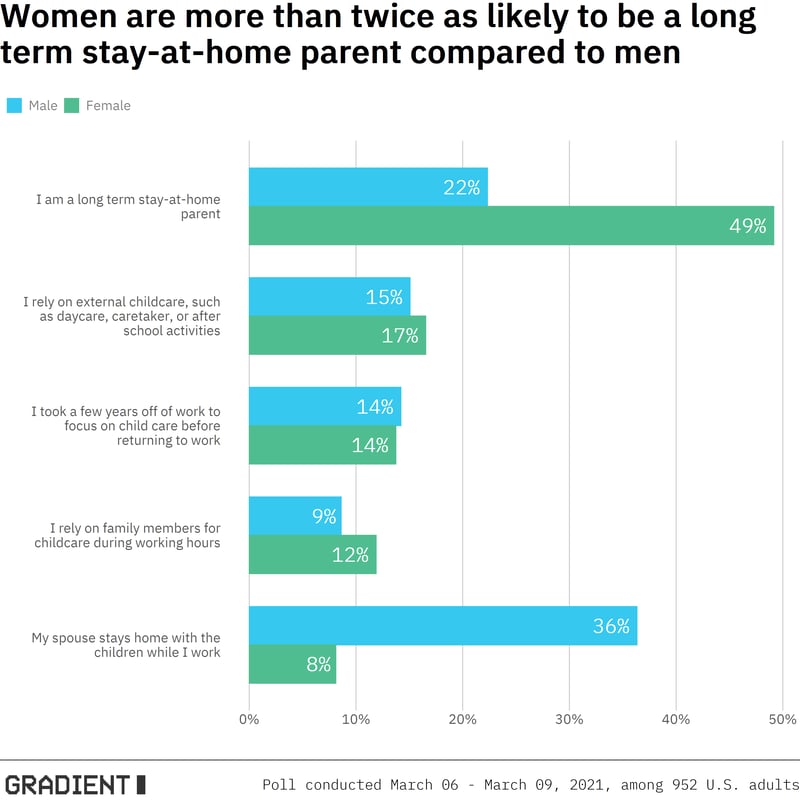
Of the 57% of Americans who are parents, navigating childcare outside of a pandemic is a challenge. During the current public health crisis, the “village” has become absolutely essential. Among parents with children under the age of 12, the percentage of long-term stay-at-home parents actually decreased from 38% to 31% along with the percentage who rely on external childcare such as daycare, which fell from 16% to 10% between March 2020 and March 2021.
So … with fewer parents serving as the primary in-home caregiver and fewer children going to daycare … who is making sure our toddlers aren’t eating the cat food (or worse — from the litter box) again?
Like everything in the past 12 months, there has been a lot of churn. Pandemic parents are increasingly relying on a multitude of childcare options. Notably, parents are 4% more likely this March to have decided to take significant time off from work and focus on raising their children compared to the same time last year.
Accounting for a 6% shift in the distribution of childcare responsibilities, a spouse and other family members have taken on increased nanny duties while a working parent takes cover in the attic to avoid the living room-turned-war room.

The pandemic and economic downfall has hit everyone hard — but studies have shown women continue to bear more burden of unpaid workload than men. Regardless of the pandemic, women are more than twice as likely to be a long term stay-at-home parent compared to men (49%, compared to 22%).
If we want to increase that 8%... we’re gonna need to stop blaming the ‘unprecedented’ and start changing the precedent. To all our readers who are working moms, we see you and we’d be nowhere without you.


